1. 2.7.1
1.1. Describe classes of fire extinguishers
1.1.1. Resources
2. 2
2.1. OPERATIONAL RISK MANAGEMENT (ORM)
2.1.1. 2.1
2.1.1.1. ORM
2.1.1.1.1. Resources
2.1.2. 2.2
2.1.2.1. AFOSH Standards for AFSC
2.1.2.1.1. Resources
2.1.3. 2.3
2.1.3.1. Hazards of the AFSC
2.1.3.1.1. Resources
2.1.4. 2.4
2.1.4.1. Practice safety precautions
2.1.4.2. 2.4.1
2.1.4.2.1. Maintenance actions
2.1.4.3. 2.4.2
2.1.4.3.1. Energized equipment
2.1.4.4. 2.4.3
2.1.4.5. 2.4.4
2.1.4.5.1. In Radio Frequency (RF) hazard environments
2.1.4.6. 2.4.5
2.1.4.6.1. Working with compressed gas cylinders
2.1.4.7. 2.4.6
2.1.4.7.1. When handling hazardous materials
2.1.4.7.2. New node
2.1.5. 2.5
2.1.5.1. Safety and personal protective equipment
2.1.5.1.1. Resources
2.1.5.2. 2.5.1
2.1.5.3. 2.5.2
2.1.5.3.1. Maintain
2.1.5.4. 2.5.3
2.1.5.4.1. Inspect
2.1.6. 2.7
2.1.6.1. Fire protection procedures
2.1.6.1.1. Resources
2.1.6.2. 2.7.2
2.1.6.2.1. Describe fire protection procedures for electronic equipment
2.1.6.3. 2.7.3
2.1.6.3.1. Describe fire protection procedures for critical communications facilities
2.1.7. 2.8
2.1.7.1. Work center safety program
2.1.7.1.1. Resources
2.1.7.2. 2.8.1
2.1.7.3. 2.8.2
2.1.7.3.1. Manage workcenter program
2.1.7.3.2. Conduct Job Safety Analysis
2.1.7.4. 2.8.3
2.1.7.4.1. Document AF Form 55
3. Use
3.1. Resources
4. Resources
5. 2.6
5.1. Preform general housekeeping
5.1.1. Resources
6. Around High Voltage equipment
6.1. Resources
7. 5 Level Tasks
7.1. 1
7.1.1. CYBER TRANSPORT CAREER FIELD
7.1.1.1. 1.1.
7.1.1.1.1. Structure
7.1.1.2. 1.2
7.1.1.2.1. Progression within Air Force Specialty Code 3D1X2
7.1.1.3. 1.3
7.1.1.3.1. Read CFETP 3D1X2, Part I
7.1.1.4. 1.4
7.1.1.4.1. Air Force Specialty Code 3D1X2
7.1.1.4.2. 1.4.1
7.1.1.4.3. 1.4.2
7.1.1.4.4. 1.4.3
7.1.1.4.5. 1.4.4
7.1.1.4.6. 1.4.5
7.1.1.4.7. 1.4.6
8. Task References
8.1. 1
8.1.1. CYBER TRANSPORT CAREER FIELD
8.1.1.1. AFH 33-337
8.1.1.2. AFI 10-401
8.1.1.3. AFMAN 36-2101
8.1.1.4. 3D1X2 CFETP
8.1.1.5. AFI
8.1.1.5.1. 33-115
8.1.1.5.2. 10-401
8.1.1.6. Subtasks
8.2. 2
8.2.1. OPERATIONAL RISK MANAGEMENT (ORM)
8.2.1.1. AFI
8.2.1.1.1. 90-901
8.2.1.1.2. 91-301
8.2.1.1.3. 91-302
8.2.1.2. AFOSH STD
8.2.1.2.1. 91-50
8.2.1.2.2. 91-64
8.2.1.2.3. 91-501
8.2.1.3. Subtasks
9. PROFICIENCY
9.1. Task Knowledge
9.1.1. 1
9.1.1.1. Can do simple parts of the task. Needs to be told or shown how to do most of the task. (EXTREMELY LIMITED)
9.1.2. 2
9.1.2.1. Can do most parts of the task. Needs help only on hardest parts. (PARTIALLY PROFICIENT)
9.1.3. 3
9.1.3.1. Can do all parts of the task. Needs only a spot check of completed work. (COMPETENT)
9.1.4. 4
9.1.4.1. Can do the complete task quickly and accurately. Can tell or show others how to do the task. (HIGHLY PROFICIENT)
9.2. Task Preformance
9.2.1. a
9.2.2. b
9.2.2.1. Can name parts, tools, and simple facts about the task. (NOMENCLATURE)
9.2.2.2. Can determine step by step procedures for doing the task. (PROCEDURES)
9.2.3. c
9.2.3.1. Can identify why and when the task must be done and why each step is needed. (OPERATING PRINCIPLES)
9.2.4. d
9.2.4.1. Can predict, isolate, and resolve problems about the task. (ADVANCED THEORY)
9.3. Subject Knowledge
9.3.1. A
9.3.1.1. Can identify basic facts and terms about the subject. (FACTS)
9.3.2. B
9.3.2.1. Can identify relationship of basic facts and state general principles about the subject. (PRINCIPLES)
9.3.3. C
9.3.3.1. Can analyze facts and principles and draw conclusions about the subject. (ANALYSIS)
9.3.4. D
9.3.4.1. Can evaluate conditions and make proper decisions about the subject. (EVALUATION)
